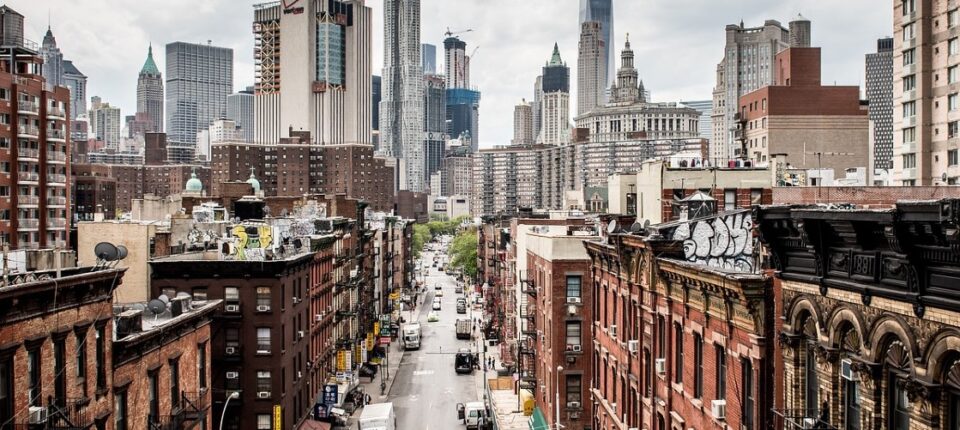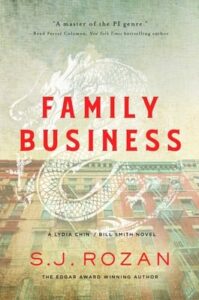Here in New York City everything changes all the time. Ask any New Yorker: if you don’t walk down every block in the city every six months, the next time you get somewhere you’ll find it’s changed it to the point where you’ll be checking your little blue dot to make sure you’re where you thought you were.
But very few of us can cover the whole city twice a year. Including me, though I work at it. Instead we count on the fact that though blocks change fast, neighborhoods change slowly. They do change, and sometimes even vanish. What used to be the Jewish Lower East Side has totally gone, leaving behind some buildings now taking on new uses. Little Italy is gone, too, except for a few restaurants serving huge portions of mediocre food to tourists. Much better Italian food is on offer on Arthur Avenue, in the Bronx; and speaking of the Bronx, the Concourse was Grand, then fell on hard times, and is now rising again.
Some of those changes are the result of natural cycles. Second- and third-generation children of immigrants move away, spread out through the country following opportunity, and other people, other peoples, fill their places. Some of them aren’t: the White flight of the ’60’s and ’70’s that caused the decline of the Grand Concourse was fueled by the blockbusting of greedy real-estate agents. Blockbusting is illegal now, and was immoral then. Didn’t stop anybody.
There are also the changes that result from single events. The German community of the Lower East Side disappeared within a few of years of the sinking of the General Slocum. The seacoast of Brooklyn was forever altered by Hurricane Sandy. The thriving community of Seneca Village was wiped out by the City to make room for Central Park.
And that last, there’s the rub. Population cycles, natural disasters, and unprincipled greed are unavoidable and to be expected, though their effects can be mitigated if you’re motivated to try. The actions of the City itself, though, are the result of choices made by government. It’s reasonable to hope, even to expect, that these choices will be made for the good of the citizens; because who is the City, if not the citizens? But often, to no one’s surprise, they’re not.
The actions of the City are too often tied to the interests of developers. As a former architect and in most ways a pragmatist I don’t disapprove of development across the board. Many buildings are, sadly, mediocre and can stand to be replaced by other buildings. The jobs and vitality brought by construction inject new energy into the city as a place and the City as an entity.
But as a writer, I do wish it were called something else.
“Development” is inherently positive. Who wouldn’t want something “developed?” The “anti-development” forces are, by virtue of words and before looking at the merits, always fighting an image as cranks, as the anti-change, anti-improvement side. What if construction change were called “eradication?” They’re planning an eradication project for the west side, taking down three blocks of existing buildings for some skyscrapers. Doesn’t sound quite as enticing, does it?
That change of label will never happen, of course. The “developers” won that fight before it started. But is “development” always improvement? Obviously not. Anyone who remembers, or has seen photos of, the old Penn Station can attest to that.
Which brings us to my new Lydia Chin/Bill Smith novel, Family Business.
Chinatown, Manhattan, NYC, is in some ways just another ethnic neighborhood. It had a beginning; the area was successively Native, Dutch, British, American Colonial—and during all those iterations enslaved and free Blacks lived among the Whites—then immigrant Italian, south-eastern European, and Eastern European Jewish before the Chinese started to come. Eventually, it will have a natural end.
But not yet, not a natural one. Chinese immigrants—once, entirely Cantonese, now with a significant population of Fukienese and other Mainlanders, plus Taiwanese—are still arriving. The community is still full of people working for a foothold in American life. The streets, though hit hard by the double whammy of COVID and the anti-Asian attitude it produced, are still vibrant. The primary and high schools are full, and many Chinatowners who live there now were born there, some having spent their lives in Chinatown, others returning. Chinatown’s not nearly ready for its natural end.
What threatens Chinatown is gentrification, and its also-conscienceless brother, development.
Barring the projects, there’s very little real estate left in Manhattan where lower-income people can live. There are also very few areas where the average building height is six stories and below. Chinatown’s both. But Chinatown’s also beautifully located, close to the courts, the government agencies, the financial heart of New York and therefore the country, many subways, and the already-gentrified areas of the Lower East Side and Soho. Before the pandemic one or two cutting-edge clubs frequented by uptowners, not Chinatowners, had already opened there. When a lot of money’s to be made, greedy landlords will skyrocket rents and harass tenants. These are the mechanisms of gentrification. Some, like harassment, are illegal. Others, like raising commercial rents to get rid of existing businesses and then keeping storefronts empty until someone, likely a chain, comes along that can pay the new rent, should be. As mentioned above, these actions, though dishonorable, are not surprising and can be fought.
But the other enemy is also bearing down on Chinatown. This is what I’m concerned with in Family Business: the specter of development. The book’s opening set-up involves a developer trying to put together a large parcel on a Chinatown corner, to tear down what’s there and build a high-rise condo. Could it happen? Doing the research for this book I found a chilling fact: none of Chinatown is landmarked. None; though with all those changing waves of ethnicity many buildings are historically important. It’s only the height controls of zoning that have kept developers from doing exactly what the one in Family Business wants to do. And zoning resolutions can be changed.
Or ignored. As of this writing, the City plans to build a new jail on the edge of Chinatown to replace the Manhattan Detention Center, aka the Tombs. The MDC is no garden spot, and no one has any love for the existing building. Its construction in the early 1970’s was fought by the community. The City made a few concessions and went ahead. The new building won’t be any taller than what’s there but its massing will be much more solid. The real problem is this: in 1975, when the existing building opened, New York was on the ropes. Nothing was gentrifying; in fact the city was losing population. Now, the temporary pandemic dip notwithstanding, gentrification pressure all over New York is intense. Once a building like this rises on the edge of a neighborhood developers use it as a lever to pry open the rest of the area. They offer community facilities, affordable apartments—a dubious label, always—and all kinds of incentives to sweeten the deal, not for the actual community, but for the decision-makers in the City.
Including bribes? Absolutely, in the form of campaign contributions if not outright cash. Meanwhile landlords, smelling money in the air if they deliver their buildings empty, start to skyrocket the rents on commercial tenants and residential ones with no rent protections. They offer a moving-out bounty to residential tenants whose rents are controlled or stabilized. Or they harass them. Harassment can range from not making repairs to turning off heat to hiring thugs who commit escalating acts of violence. The promise of a lot of money pretty much guarantees a lot of crime, from the street to the suite. So stores start to close, people are either paid to move away, or driven out, and at a critical mass the neighborhood has been block-busted and it vanishes.
This could happen to Chinatown. The City has a responsibility to see that it doesn’t, but since the City is planning the new jail, the thin edge of the wedge, it doesn’t seem likely that it will do its duty. It will be up to the Chinatown community and those who love the place to fight to make sure Chinatown lives out its natural life. I’ll be there.
***


















